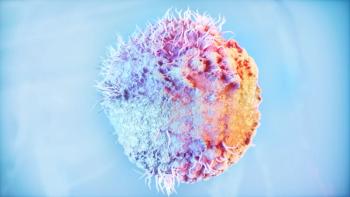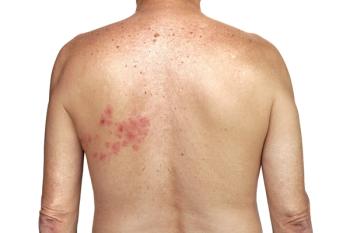
Managing Shingles on the Scalp
Pay special attention to prevent permanent hair loss.
Herpes zoster, also commonly known as shingles, is a viral infection that occurs when the dormant varicella-zoster virus (VZV) reactivates in the body after causing an earlier case of chickenpox. Once a person recovers from chickenpox, VZV travels deep into nerve tissues and remains dormant for decades. When it reawakens, it travels back up the same nerve to the skin where it reemerges as shingles.
Any individual that has had chickenpox can develop shingles unless they have been vaccinated against it, which greatly decreases their risk. Approximately 60% of all shingles cases occur in people over the age of 60.
One of the most common
Shingles on the scalp is particularly tricky to treat because the skin there is very sensitive. Simple pressure from washing or brushing the hair can result in broken and bleeding blisters.
Besides pain, shingles on the scalp can cause headaches and weakness on one side of the face that makes it appear to droop. It can also cause hair loss from combing or scratching, or even permanent baldness from cicatricial alopecia, which destroys the hair follicles that generate hair growth and replaces them with scar tissue.
When diagnosing shingles on the scalp, one of the first steps a health care provider takes is to examine the appearance and feel of the rash. They also ask about other symptoms the patient is experiencing.
Symptoms associated with shingles include itching, burning, redness, or tingling in the area of the rash; mild to severe pain in the affected area; fever, chills, nausea, headache, sensitivity to light, and fatigue. A course of antivirals should be started as soon as possible to shorten the length of the infection and help prevent serious complications.
During the acute eruptive phase of shingles of the scalp, the blisters form and then break. A dry crust then forms on the skin. The focus should be on managing the
Recommendations include applying cold compresses to the affected area to numb the pain and using calamine or menthol lotion to lessen itching. Use gentle, unscented shampoos and warm water to wash the hair, and avoid scrubbing the scalp. Don’t use hair spray and styling products for the duration of the rash, which could last 3 to 5 weeks.
The
“Two doses of Shingrix are more than 90% effective at preventing shingles and PHN. Protection stays above 85% for at least the first 4 years after you get vaccinated,” notes the CDC on its website.
Newsletter
Pharmacy practice is always changing. Stay ahead of the curve with the Drug Topics newsletter and get the latest drug information, industry trends, and patient care tips.















































































































